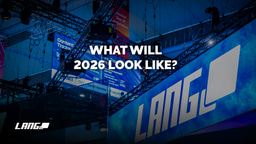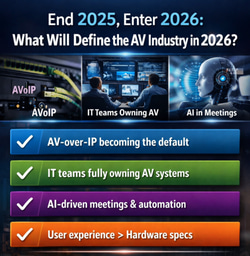2026 Preview – What Our Experts Anticipate This Year


Do you need a reliable digital signage system that meets your needs as a fast food business? Digital signage has become much more accessible and widespread in the fast food space than ever before, and business owners have plenty of options to choose from. QSR digital menu boards have become a standard in many industries, including convenience stores and retail chains. These systems have been implemented by some brands and as a result, the industry has seen an improvement in the customer experience due to the faster checkouts, shorter wait times, and higher accuracy.
While quick service restaurants across the industry want to get their hands on a digital menu board system that would improve their business, so many product options can cause a long search process and lots of trial and error. But investing in new technology is a major commitment for a business, so it’s important to get it right the first time. So how do you know you’re choosing the right option for your new digital menu board? Drawing on our well of experience in the industry, we can guide you through how to do a thorough quality test. Throughout this article, we’ll spotlight the key factors you need to look for.
Part of finding the right digital menu system for your business is understanding exactly what this technology does and how it works. Let’s break it down:
Digital menu boards can be found inside restaurants, other food service establishments, or outside as drive-thru menu installations. Depending on the brand and the main function the signage technology was designed for, different menu boards have varying strengths. Some digital menu boards are more adept at inventory management, marketing, payment processing, customer service, and marketing than others. Here are a few notable functions and advantages you might find when shopping around at digital signage companies:
Depending on what you believe your customers want and how you want to use digital signage in your business, you could be looking for any number of these things. But in order to really evaluate a digital menu board you’re looking for, you need to go deeper.
If you want to choose a digital signage investment that will be worth it long-term and significantly improve your service, consider these qualities in your next quality test.
Images are what attract your customers’ attention, so they have to be high-quality. There are two types of resolution for displays: line count and dot density. Dot density is the number of pixels per inch on the surface. Line count refers to the number of horizontal and vertical lines that make up each individual pixel. Some monitors have high resolutions but can cause headaches. A display with less than 1,920×2,160 dots per inch (DPI), is great for menus. Most monitors have an average resolution of 800 to 1,600 DPI.
Are your brand colors displaying consistently across all your screens? The quality of your brand’s visuals should be non-negotiable. You need to ensure that your digital signage system accurately represents your brand to customers. Also, are images and videos of the menu items accurately portrayed in color? You should consider upgrading to higher-quality digital signage if something is wrong with the color.
The size of the digital displays you choose can impact a number of other factors in your business. For example, if these are indoor menu boards or self-ordering kiosks, how will it impact your space? If it’s a large menu board, do you have the budget to install the number that you want? Size can also impact energy usage. Do you have the budget to support the energy bills? If not, perhaps a smaller, more efficient signage option would work better for your business.
Brightness is measured in candelas per square meter (cd/m2). Most displays have a brightness of between 300 to 600 cd/m2, although higher numbers often indicate brighter images. Backlit screens are also brighter and easier to read, especially if you’re considering an outdoor menu board (such as a drive-thru menu) that will need to combat glare from the sun. High-brightness screens that won’t overheat or lose visibility in the sun are what you should look for.
Point of View On NITs — Anything over 2k on an LCD is overkill. The power curve starts to go through the roof. It’s also not linear in 2000 is twice as much as 1000. The equation is logarithmic. You can see a 1000nit gas pump fine. To say 3k Nit is needed is showing some inadequacies of themselves. Waste of power(excessive), capital costs and induces quicker failure rates.
The contrast ratio is the measure of how black and white text stands out against its background. This is a measure of the accuracy of a display. The better the contrast ratio the signage is able to provide, the easier it will be for customers to read your restaurant menu.
The refresh rate is the speed at which information is displayed on your screen. Most systems run at 60 Hz. Newer systems can run at 144 Hz. This number is used to determine how quickly your eyes perceive changes in screen elements. The refresh rate is essential in reducing eye strain or motion blur.
If you’re considering buying a digital menu board or evaluating the ones you currently have, does it have a warranty? It’s important to have the guarantee that any issue that comes up won’t cost you an arm and a leg. The usual warranty is for the first year and if anything goes wrong, a certified technician will show up on-site and replace the LCD.
What is the operating temperature of your digital menu board? It’s important to know the maximum temperature your signage can continue operating. Most outdoor units have an operational temperature of 50C or lower. For example, Keyser’s operational temperature is 60C in direct solar load. This is rare and something that most others in the market can’t match.
After covering some important qualities to look for in a digital signage solution, we wanted to highlight something that we think should be front and center in your quality test: fans. Especially if you are considering an outdoor menu board, the presence of a fan can have a significant impact on how your menu board operates and what problems you could run into in the future.
Many digital menu boards on the market often come with a built-in fan and its main purpose is to move air. Similar to a fan on a laptop, it’s meant to keep the device from overheating and keep the interior of the LCD cabinet cool. Essentially, it’s meant to expel hot air and bring in cooler air.
While fans served a purpose for older models (designs from about 10 years ago), fans are often a cumbersome problem for outdoor digital menu boards in particular. Electronics have evolved and LCDs don’t require as much air to keep cool. In addition, the fan has a big risk factor if it stops working: the LCD enclosure overheats and bakes everything inside, making the whole display unrepairable. This highlights a fundamental design failure for these menu boards.
Tip: Mcdonald's in California suffered many failures which at first resembled isotrophic failure but were in fact inadequate ventilation. See related examination.
Fans continuously pull larger particles through the LCD enclosure, which can damage it. To prevent this, filters are needed, which are an extra expense.
Another risk with fans is that animals sometimes climb in and damage them. There have also been occasions when bees or wasps fly in and create nests. These are both avoidable hazards by investing in fanless menu boards.
Now that we’ve covered the negatives of fans, let’s look at what you stand to benefit from going fanless.
Maintenance
Signage companies that offer digital menu boards with fans may offer a maintenance contract to account for the multiple occasions when something could go wrong. However, most QSRs don’t sign up for the maintenance contract. They don’t want to pay for those services because they expect the display to work in the first place. But when something goes wrong, they don’t have any options.
With fanless menu boards, the need for maintenance is much lower. So even if you don’t sign up for a service contract with the signage company, there’s not as much of a risk because fanless menu boards don’t have as many technical issues.
Operational Costs
It takes more resources to use certain digital menu boards than others and there are significantly more parts, labor, and time invested for digital menu boards with fans.
How power efficient is your qsr digital menu board? Energy efficiency is a major factor for many businesses, especially as responsible power usage becomes a more important issue as climate change approaches. Models with fans are more costly to run, so going fanless helps you avoid a higher electric bill. The most power-efficient signage offered by Keyser is 189 Watts @2500 nits, which reduces operational costs.
Size
Eliminating the fan also reduces the overall size of the display, which now has a much more sleek, compact look. This is comparable to the size difference between an industrial AC unit and a Best Buy TV.
Does upgrading your QSR digital menu board system sound like something you’re interested in for your fast-casual restaurant? Are you a restaurant owner or executive who wants to learn more about digital menu boards? Contact info@kioskindustry.org for more information.
As published on kioskindustry.org
Resource listing
Videos
An outdoor digital menu board being tested outdoors
The Industry Group (aka Kiosk Association) comprises various related technology sites and news feeds from kiosks to digital signage to POS and Smart City. Retail Automation and EV Charging are others. Self-service technology (SST) is a type of technology that allows customers to perform various tasks without the assistance of a human. SSTs can bring many benefits to both customers and businesses, including cost savings, improved efficiency, and better customer experience.
The Kiosk Association comprises companies involved in self-service, digital signage, digital menus, outdoor technology, kiosks, point-of-sale, smart city, healthcare, telehealth, voice order, thin client, EV charging and retail automation.
Intel Computing
Media Player Software
Kiosks & Embedded
Kiosk Manufacturer and Design
Gold Sponsors



We and selected partners, use cookies or similar technologies as specified in the cookie policy and privacy policy.
You can consent to the use of such technologies by closing this notice.
Please sign in or register for FREE
If you are a registered user on AVIXA Xchange, please sign in